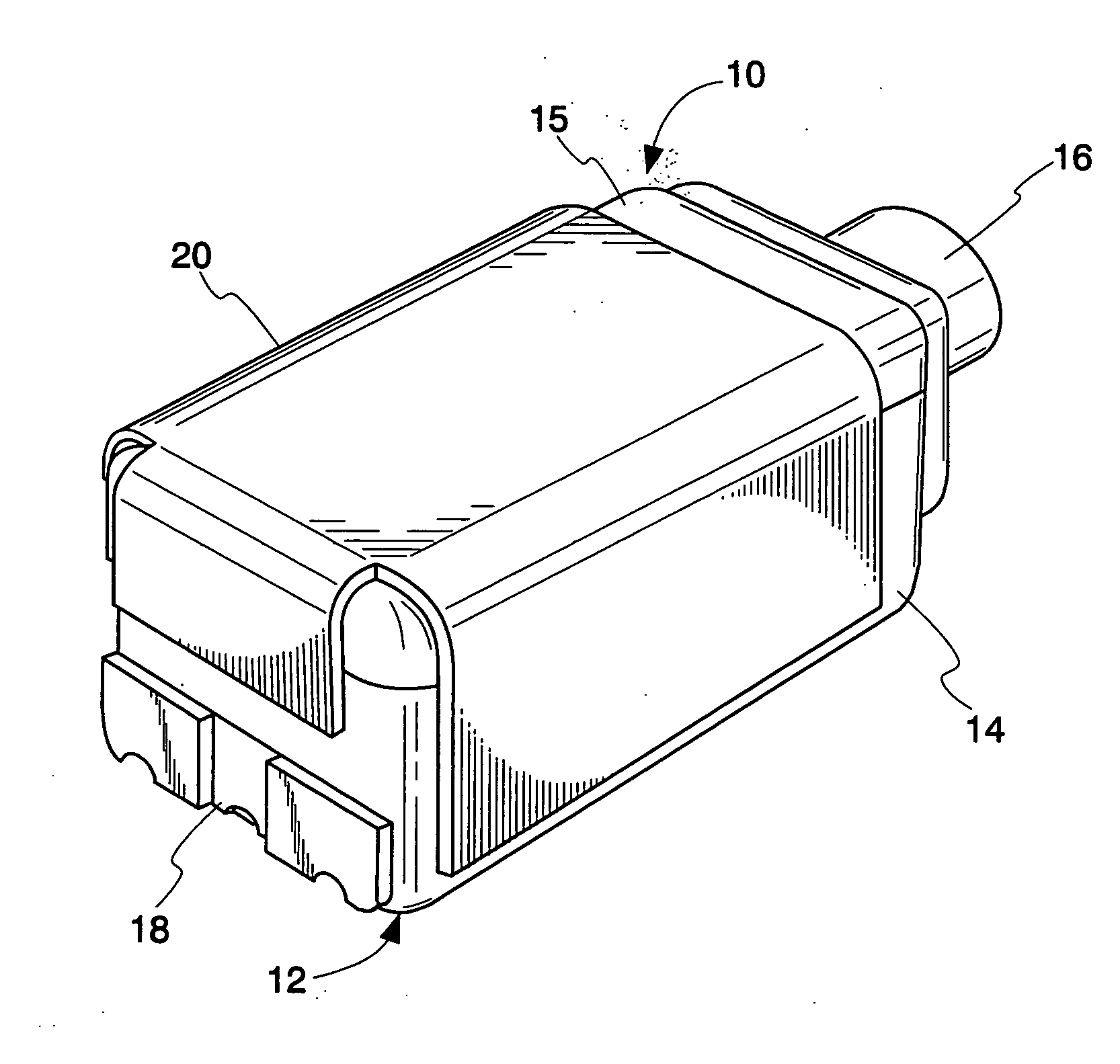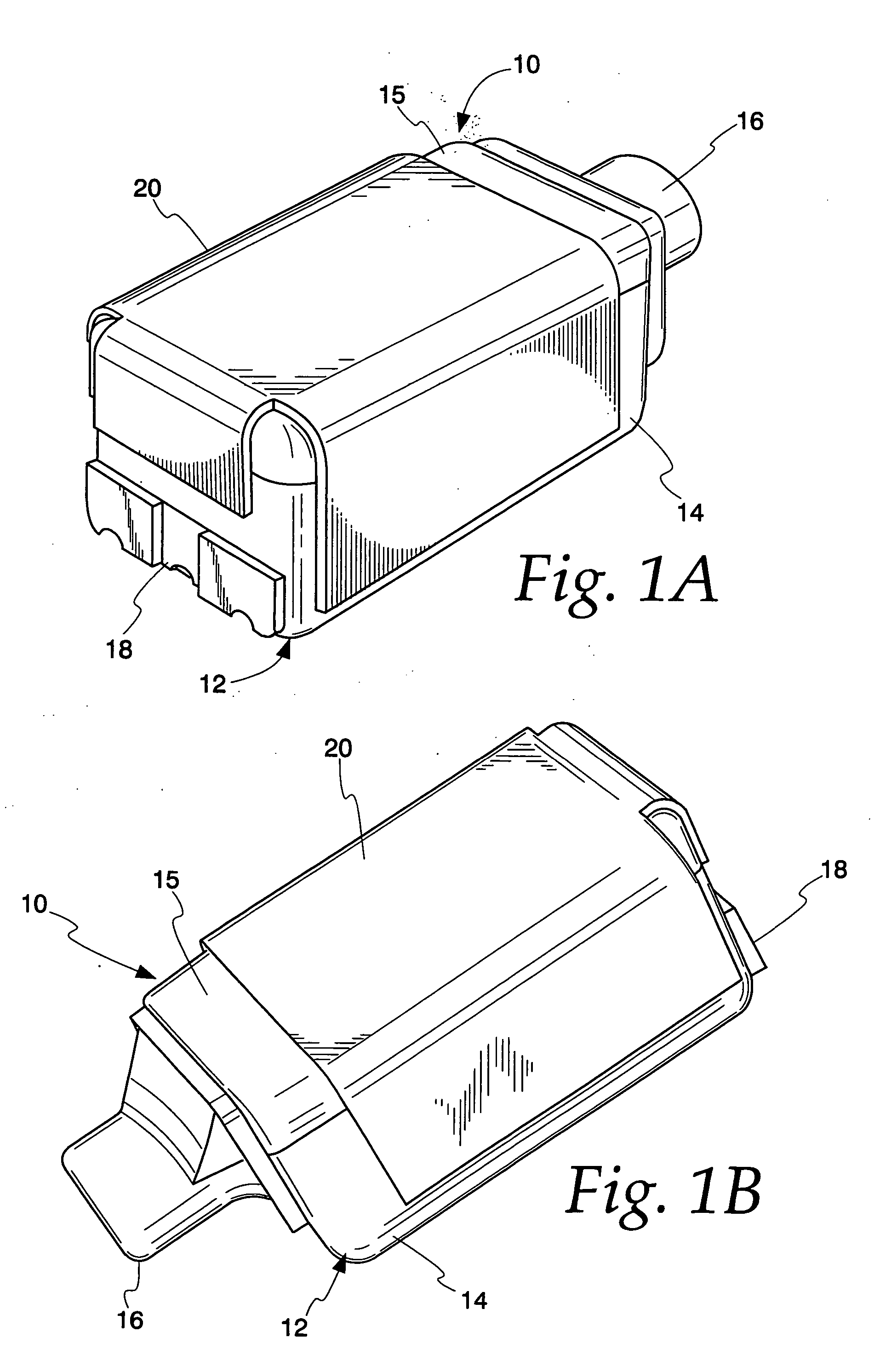Acoustical receiver housing for hearing aids
a receiver and acoustic technology, applied in the field of receivers, can solve the problems of receivers creating undesirable feedback signals, providing some level of sturdiness, and reducing the service life of receivers, so as to improve service life, improve service life, and give some stiffness and acoustic isolation
- Summary
- Abstract
- Description
- Claims
- Application Information
AI Technical Summary
Benefits of technology
Problems solved by technology
Method used
Image
Examples
Embodiment Construction
[0024]FIGS. 1A and 1B illustrate a first embodiment of the present invention. An acoustic receiver 10 includes various working components that convert an input audio signal into an acoustic signal. These working components typically include several electromagnetic components that move a drive element coupled to a diaphragm for creating the acoustic signal. In the disclosed embodiment, the receiver 10 is a balanced armature receiver. An example of a receiver is disclosed in commonly assigned U.S. Pat. No. 6,075,870, titled “Electroacoustic Transducer With Improved Shock Resistance,” which is incorporated herein by reference in its entirety.
[0025] A housing 12 surrounds the working components and includes a case 14 and a cover 15 above the case 14. The housing 12 has six sides, each of which is generally rectangular. Of course, the housing 12 may take the form of various shapes (e.g., cylindrical, D-shaped, or trapezoid-shaped) with a different number of sides. One end surface of the...
PUM
 Login to View More
Login to View More Abstract
Description
Claims
Application Information
 Login to View More
Login to View More - R&D
- Intellectual Property
- Life Sciences
- Materials
- Tech Scout
- Unparalleled Data Quality
- Higher Quality Content
- 60% Fewer Hallucinations
Browse by: Latest US Patents, China's latest patents, Technical Efficacy Thesaurus, Application Domain, Technology Topic, Popular Technical Reports.
© 2025 PatSnap. All rights reserved.Legal|Privacy policy|Modern Slavery Act Transparency Statement|Sitemap|About US| Contact US: help@patsnap.com



